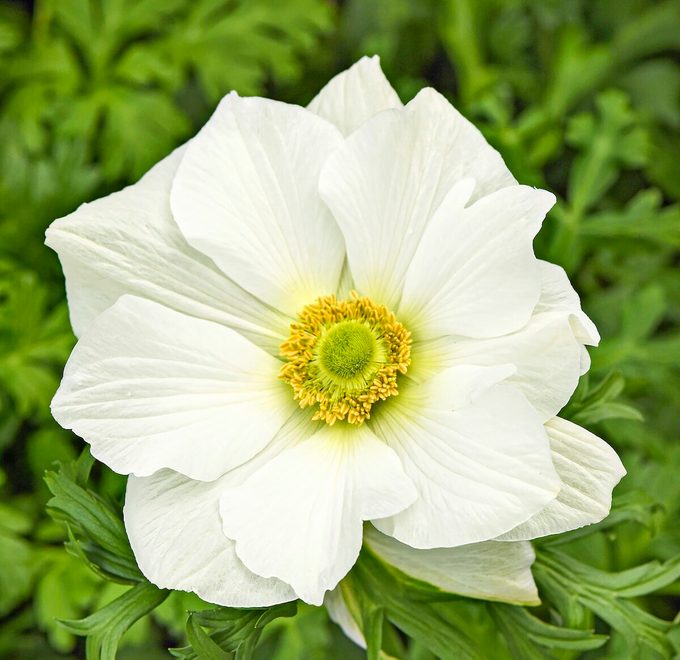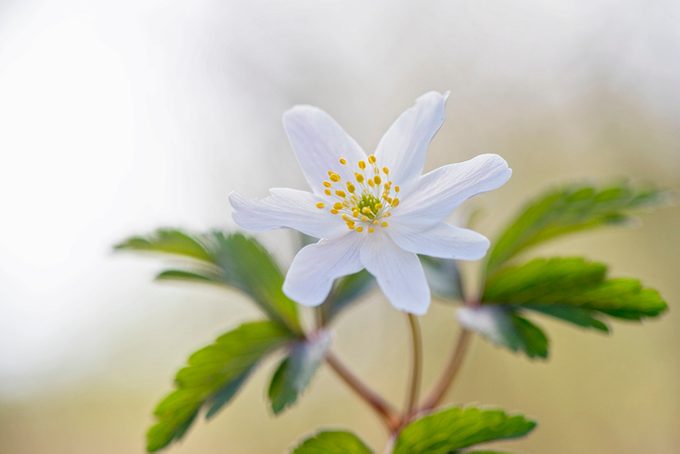Learn about the most common anemone flower types and how to care for them. Add these beautiful flowers to your garden.

The Ultimate Guide to Anemone Flower Care

On This Page
How to Grow an Anemone Flower

- Common names: Anemone or windflower
- Scientific name: Anemone spp.
- Soil type: Well-draining soil
- Water needs: Moist
- Attracts: Butterflies and bees
- Hardiness zone: See individual types below
There are about 200 anemone plant species. Most have daisy-like flowers. Some species bloom in the spring, while others bloom in the fall. Some spread through underground stems called rhizomes; others are grown by bulb-like roots called corms.
Anemones do not need pruning, deadheading, or fertilizing. Propagation depends on the root structure, see below for more details. They are not sold as seed or propagated by seed.
Winter protection is not necessary if they are grown within their hardiness zones.
Anemone Flower Pests and Problems
Anemones are deer and rabbit resistant. Usually the only issue is powdery mildew on the leaves if grown in too much shade and humidity. The plants are moderately toxic to humans and pets.
Types of Anemone Flowers to Grow
There are five commonly grown types of anemone flowers. Of these, poppy and Japanese anemone do well in containers.
Grecian windflower and poppy anemone are spring bloomers sold as corms (bulb-like root structures). The corms should be soaked in water 24 hours before planting. The last three are sold as small container plants from nurseries.
Grecian Windflower

Grecian windflowers (Anemone blanda) are early spring blooming ephemerals, about 5 inches high. Flowers are available in blue, white, purple, or rose. Grecian windflowers are perfect as ground covers for spring blooming bulbs. Hardy to zone 5, the corms are planted in the fall and left in the ground to naturalize. Karen Bussolini, senior horticultural advisor at White Flower Farm, recommends planting these in a sunny spot with well-draining soil. “They create a colorful carpet under late daffodils and midseason tulips and shine in rock gardens,” said Karen. “If you’re lucky, they will self-sow modestly in lawns and borders.”
Poppy Anemone

Poppy anemones (Anemone coronaria) grow to about 1 ½ feet tall with a 6-to-9-inch spread in full sun to light shade. They bloom 2-inch poppy-like flowers in late spring/early summer. These are popular cut flowers so there are many cultivars with flower colors such as red, bicolor red and white, purple, white, lavender, rose, and cream. Hardy to zone 7 or 8, corms can be planted in the fall in the south or in the early spring in the north after the last spring frost. They do very well as container plants. In the south, they will become dormant after they bloom. In the north, gardeners can either treat them like annuals or lift and store the corms to plant again next year.
European Wood Anemone

European wood anemones (Anemone nemorosa) are perennial ground covers, about a foot tall with flowers that bloom from April to June. There is an amazing diversity in flower and foliage color and shape. This anemone plant spreads by rhizomes but is not invasive. Hardy to zone 4, the plant is dormant in the summer; therefore, it is propagated by dividing in the spring. Wood anemones prefer shade and moist but well-draining soil such as woodlands and deciduous forests.
Snowdrop Anemone

Snowdrop anemones (Anemone sylvestris) are perennials that spread by rhizomes and grow to be 1 1/2 feet tall. Hardy to zone 4, they bloom white flowers. “This is a lovely, vigorous plant to naturalize in bright woodland gardens, unfussy about soil,” says Karen. “Plant in full sun or part shade and give it room to run. Mingle with taller perennials, or under shrubs. Divide this May and September-blooming beauty in the spring.”
Japanese Anemone

Japanese anemones (Anemone x hybrida) can be large perennials, about 1 to 1 ½ feet tall, but up to 3 feet when blooming. Flowers appear in late summer to fall on wiry stems held high above the foliage. There is tremendous variety in size and flower color. Hardy to zone 4, Japanese anemones’ rhizomatous roots can be divided in the spring. Shorter varieties can be grown in containers. “Plant in deep, rich, moisture-retentive soil in sun to part shade for a fall display of showy blossoms beloved by late-season pollinators,” recommends Karen. “It is best to provide relief from midday sun — provide afternoon shade in warmer climates.”
About the Expert
Karen Bussolini is senior horticultural advisor at White Flower Farm, a family-owned mail- order nursery celebrating its 75th year in Morris, Connecticut. As part of a product development team, she works on Start A Garden preplanned gardens for beginners and trials plants for possible introduction.
Sources
- North Carolina Cooperative Extension – “Anemone coronaria”
- Missouri Botanical Garden – “Anemone nemorosa”
- Missouri Botanical Garden – “Anemone syvestris”
- University of California Master Gardener Program of Sonoma County – “Anemone x hybrida — Japanese Anemone”




















